
Five historic football derbies that maybe you don't know
Hot matches maybe less known but absolutely fascinating, like other derbies more famous
August 29th, 2019
Some people think that derbies are the essence of football, others think that football is the essence of the derbies. Both are wrong. Football derbies are nothing more than the result of ancient challenges between opposing but geographically close factions, whose battle cries claim actions and episodes very distant from the sports pitch. Precisely because often the background of the matches is decidedly too political, it is good to consider derbies like encounters that have nothing to do with the championships of which they are part, and also with the rankings, with the points, etc...
The choreographies of the Milan derby, the fierce rivalry of that of Madrid, or even the legends of the Glasgow's Old Firm and of the Buenos Aires' Superclasico, the hot matches between Istanbul's Fenerbahce and Galatasaray or the Merseyside derby, are from time become part of the collective imagination, and contribute to increasing the pop charm of the events that frame them. But there are so many other challenges, probably less known and set in the most remote points of the globe, often less considered by public opinion given the scanty blazon of the sports contexts of which they are part.
On the contrary, we believe that this is one of the main reasons for their fascination, even a little criminal, which makes us understand once again how strong the appeal of football is all over the world, and what place it occupies in the social life of certain reality.
HŠK Zrinjski - FK Velež
Place: Mostar, Bosnia-Herzegovina
Venues: HŠK Zrinjski Stadium / Vrapcici stadion
Mostar. Southern Bosnia and Herzegovina, not far from the border with Croatia. Indeed, too close. A place that has been strategically central throughout the course of the Balkan wars of the end of the last century, and which has therefore been razed to the ground, and then fortunately rebuilt, so much so as to be indicated by the New York Times as one of the destinations to visit in 2019.
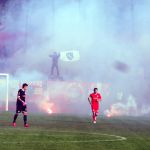
Considered by many to be the missing capital of Bosnia, the city of Mostar is built around the famous Stari Most, a bridge that separates the Croatian-Catholic part from the Bosnian-Muslim part. This particular division could only spill over into football, which in fact produced what is considered by many to be the most dangerous derby in the world. Both the teams, the Zrinjski Mostar (Croat Sports Club in English) and the Velez Mostar, faithfully reflect the above-mentioned alignments, with a tendency to the extreme right of the first club, and to the rigid communism of the second.
There have been various episodes that in the last thirty years have contributed to making this one of the most fiery sports challenges on the planet, so much so that it seems more like an urban street-fight in which football takes a back seat. Among the significant events it is necessary to mention the destruction of the Mostar bridge in 1993 during the war, immediately becoming a symbol of the conflict and further accentuating the difficulties of coexistence between the two city poles. Moreover, very emblematic that after the Bosnian independence and the end of the military dispute, the city has nevertheless maintained its two ethnic neighborhoods, and this has led the government to grant Zrinjski and his Ultras (name of the most cruel group of hooligans organized) to "steal" the stadium of the rivals, being it located in what was redesigned as the area used by the Croats of Bosnia. The Velez and the Red Star (a group of extreme leftists) therefore had to move to the small Vrapcici, a facility that hardly contains 7,000 seats.
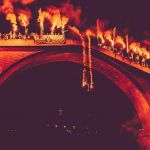
In reality, any fan of this challenge knows that the main prerogative in the stands is that of never sitting, as the images show, inciting their own team but above all insulting the opponents and their supporters, with intimidating methods from arrest. No, it's not an hyperbole. It happened, for example, that a Velez Muslim player was about to be kidnapped from the Croatian Ultras just after putting the ball into the net, after the game was still in progress. There is not even a single "normal" aspect within this hell that comes up every year. On the contrary, it is all absurd. Also the fact that nobody knows him and that he doesn't talk about it.
Maccabi Tel Aviv - Hapoel Tel Aviv
Place: Tel Aviv, Israel
Venue: Bloomfield Stadium
There's no doubt about the fact that the Gaza Strip, and Israel in general, is notoriously a powder keg. The reasons for the Israeli-Palestinian conflict are unfortunately well known in the news, as it is still ongoing. Let's go instead to focus on the importance of this football challenge, starting from an episode. Eran Zahavi, a talented playmaker we admired in Italy with the Palermo shirt, is one of the most famous faces in Israeli football. Precisely for this reason, his transfer to Maccabi after the Sicilian parenthesis caused a sensation. He, being a former Hapoel, received a lot of bad threats from his former supporters, who therefore expected only the first good opportunity for revenge. In 2014, therefore, after the attacker's goal against he rivals in the Big Tel Aviv Derby, the red and white supporters of the opposition well thought to invade the playing field en masse, in a state of anarchy that caused ten total arrests, and obviously the suspension of the game.
This story is only the result of a rivalry that has been going on for almost a century (the first disputed meeting dates back to 1928) and that involves various areas of sporting life of what has now become the administrative capital of the country, infact even the basketball game between the two homologous factions is very lively. As always, there are political characterizations of the two teams and of the supporters, but this time we prefer to avoid discussing who the rightists are and who the leftists are. It is more useful to say that the ultras of Hapoel, represented mainly by the Gate 5 group, are pro-Palestinian and have repeatedly affirmed their support for the passage of Jerusalem to the Arab state. This line also goes very well with that of the club, which in 1981 ruled Rifat Rurk, an Arab-Israeli player, creating a historical precedent within the championship. The Maccabi environment, on the other hand, is rigidly Jewish, so much so that it has a link with the Ajax supporters, and obviously fights for the possession of the Holy City.
Because of the well-marked political-religious demarcation of the two teams, it is impossible to expect from this derby the typical tranquility of those derbies whose tension begins and ends on the playing field. In this case we are talking about an access clash in every day of the year for more than eighty years, which twice a year finds its outlet on the green ground, and which unfortunately sometimes degenerates into far more serious and dangerous situations. In any case, the prestige of the game is high, as the two teams are the most successful in Israel. In fact, in fact, both teams can boast almost forty championship victories, as well as various Champions League participations. Our hope is that, as the Israeli football movement is constantly under the spotlight of UEFA, even the magnificent history of this derby can be enhanced by the international media, which for now seems to snub it.
Nacional Montevideo - Peñarol
Place: Montevideo, Uruguay
Venue: Estadio Centenario
According to many it's the oldest derby in the history of world football, obviously except for those between English teams. This is enough to recall its charm. Besides, South America is the home of futbòl, and where, if not in the stadium where the first final of a world championship was played, could all this have been at home? The 80% of the Uruguayan people are supporting one or the other team, and therefore this challenge is not only considered as a derby, but as the most important sporting event among those played in the land of the gauchos.

In reality, the reasons for knowing one rather than the other are multiple, but they are at the same time victims of a football movement, the Uruguayan one and in general the South American one, which for some time has not been able to compete with the European one, and which can have its say only in terms of the fans and myths attached to this aspect. As often happens in these areas, the strong animosity in the stands is synonymous of violence, so much so that both the Barra Amsterdam (pro Peñarol) and the Banda del Parque (pro Nacional) were protagonists of episodes of hatred, which they often end up on the pages of crime news in the media. But where does so much hatred arise between the two factions? The reason dates back to the last years of the nineteenth century, when the new Uruguayan championship was dominated by teams run by English and European settlers. From one of these clubs, the CURCC, a faction broke up that went down in history as the first with an ethnic-national vocation, namely Nacional de Montevideo, while the same CURCC continued its history in parallel, transforming its name a few years later into Peñarol, like the neighborhood where it was based. The rivalry between the parties is such as to be evident even in matters not of the first order, at least not for us Europeans. In fact, Peñarol held the record for the longest banner in world football, and this made rivals so bad that they thought it good to build a double one, that is 600 meters long and 60 high, with a total weight of 5000 pounds!
It is also difficult to forget Peñarol's 2014 victory of 5-0, driven by a revived Marcelo Zalayeta, who still represents an open wound for the other side's fans, punctually caught by opposing choirs in memory of that very humiliating day. You are probably wondering how it is possible that a country as small as Uruguay, deserted in much of its territory, is so competitive in sports and especially in football. The answer is simple, given by Luis Suarez in a television statement that tells sociologically the by now too inflated garra charrua, namely "Por que no tenemos dos huevos, tenemos tres!"
F.C. Copenaghen - Brøndby
Place: Copenaghen, Denmark
Venues: Parken stadium / Brøndby arena
It's easy to imagine what you are thinking, and that is that a derby in a Nordic country can never be as warm as those we are used to seeing. In that case, you're wrong. The rivalry between the two teams in the Danish capital is probably the hottest in all of Scandinavia and each year attracts thousands of fans intrigued by this legendary challenge. The Danish league is certainly not of the first order, but we can instead guarantee on the passion of the fans, animated by the Sektion 12 (Copenhagen) and by the Supporters (Brøndby). They battle in the pyro, that is, a very strong and suggestive smoke challenge that often causes the suspension of the match.
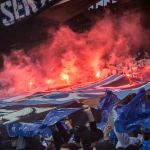
From 1992, year of re-foundation of the Danish Superligaen and of foundation of the FCK there are almost a hundred meetings between Copenhagen, and still none of them have been held in a European match. Brøndby, a team that gave birth to footballers of the likes of Michael Laudrup and many others, is the team of the town of the same name in the western suburbs of Copenhagen, and for this reason it has always been characterized from a more worker perspective than at FCK, the rich urban center team. In any case, over the years there have been episodes of violence among the supporters, with attached arrests, just as there has been no lack of absolutely disturbing scenes such as when, in a 2017 derby, the Brøndby fans launched of mice dead to FCK players.
A gruesome moment that certainly did not reduce the charm of the historic derby, which remains one of the few moments that warms up the very cold streets of the Danish capital. The "New Firm Derby", a title given to the meeting, takes place every year in the two stadiums of the respective companies. The first, the FCK Parken, which hosted the recent European matches of the team, has a capacity of almost 40,000 seats and can therefore host a Europa League final, but not the Champions League one, which requires at least 50,000.
A pity for the city that certainly deserves to be the stage for this kind of events, and unfortunately it cannot do so since the other stadium, the Brondby Arena, does not reach the necessary capacity. However, the catchment area of the two supporters does not recommend enlarging the facilities, which are difficult to fill, also due to the particular rigidity of winter in Scandinavia. To appreciate, however, that both structures do not have the athletic track and that the stands are built right next to the green rectangle. Certainly this is one of the many reasons that will push us, in the not too distant future, to buy tickets for the "New Firm" and to watch it live, mice allowing.
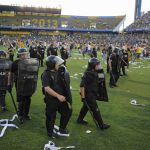
Rosario Central - Newell’s Old Boys
Place: Rosario, Argentina
Venues: Estadio De La Torre / Estadio Marcelo Bielsa
We couldn't not go back to South America. We could not fail to mention Rosario, the city of futbòl. It, the capital of the homonymous department, is the largest and most populous city in the Argentine province of Santa Fe, and has about one million inhabitants. He gave birth to football and biology to two of the caliber of Lionel Messi and Angel di Maria, who were dragging the Albiceleste on the top of the world in Brazil 2014.
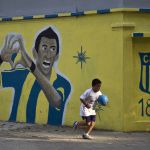
The city rises on the banks of the Paranà river, and takes its name from the ancient sanctuary of the Madonna del Rosario which is one of the places of worship in the area.
Like all of South America, Rosario has also developed its football system thanks to British travelers, who founded Central first and Newell's Old Boys later. In the latter case, it was Britain's Isaac Newell, one of the pioneers of Argentine football, who took care of the team's creation. There are those who believe this rivalry as the most important of the albiceleste championship, even above that between Boca Juniors and River Plate, and in fact the reasons for believing this theory are not few.
Let's start with the story of Aldo Poy, who in the 1970s was a young rosarino who was about to be sold by the club and who, in order not to abandon the team he loved, fled to an island, blowing up everything. It was incredible that the following year the Central was in the semifinals of the league against the eternal rivals of the Newell’s, and that Poy just scored the decisive goal with his head. A palomita, as the media has been dubbed that game, which every year is relived by the Centràl fans and by the same Aldo Pedro Poy, who realizes again the play on the anniversary day, despite the advanced age and the door...empty. This would be enough to increase the myth of this challenge, but let us also add that two of the greatest popular icons in Argentine history, such as Che Guevara and Maradona, are placed next to the Rosario and Newell’s respectively, and we can then understand how divisive this derby is. For the revolutionary fighter, a native of Rosario, sport was a way to ennoble man and his soul, and therefore his support for the yellow and blue team is still a source of great pride for the Rosario's supporters. The same could be said for the passion of the pibe de oro for the red and black team, for which he also played in the last period of his career.
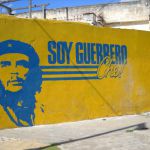
Impossible not to mention the two supporter sides, the beating heart of the Clasico rosarino, who still proudly carry behind the nicknames matured over eighty years ago, in purely random circumstances. In the 30s, in fact, those of the Central refused to organize a fundraiser for leprosy patients, and therefore canallas (villains) were defined by rivals, who instead accepted the proposal and saw themselves renamed as los leprosos (lepers). On the other hand it is well known that in Argentina the nickname they choose you only once, and when they do it is definitive. This is what also happened to Marcelo Bielsa, 'el loco', also a native of Rosario and Newell's heart, where he first played and then coached, winning the championship three times and leaving a memory such as to have the leprous stage named after him.
Obviously in the history and in the present of this rivalry there is no lack of episodes of violence, also linked to the phenomenon of barras bravas, which in many cases have meant that it has been decided to dispute the meetings behind closed doors or on neutral ground. In this case the derby has often literally become a matter of life or death, and not just rhetorically. On the other hand it is precisely Bielsa, with a statement to the international press a few years ago, to give us the thermometer of how much the Clasico rosarino is heard:
“In Buenos Aires a defeat in the derby is damped by the extension of the city, there is always a place in which to hide. In Rosario instead the defeated knows no peace: they can come and look for you under the bed to make fun of you”.
There is therefore no surprise that in the 2018 derby, 100 units of the police were summoned, despite the game being played in Buenos Aires and moreover behind closed doors. In Rosario the Clasico is this and much more.








































.png)


.jpg)



























































